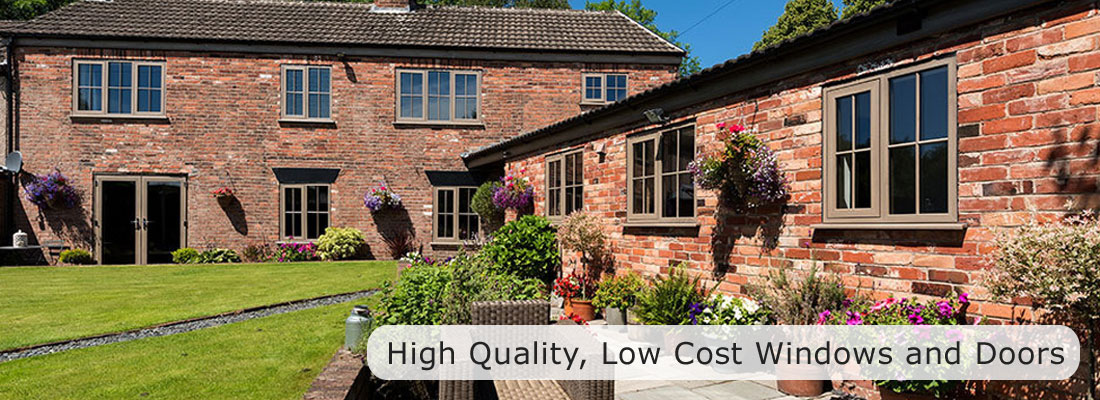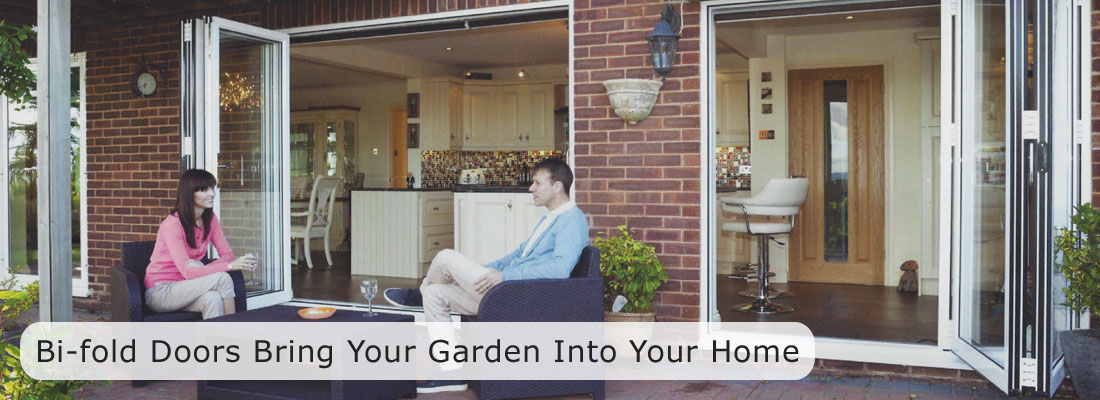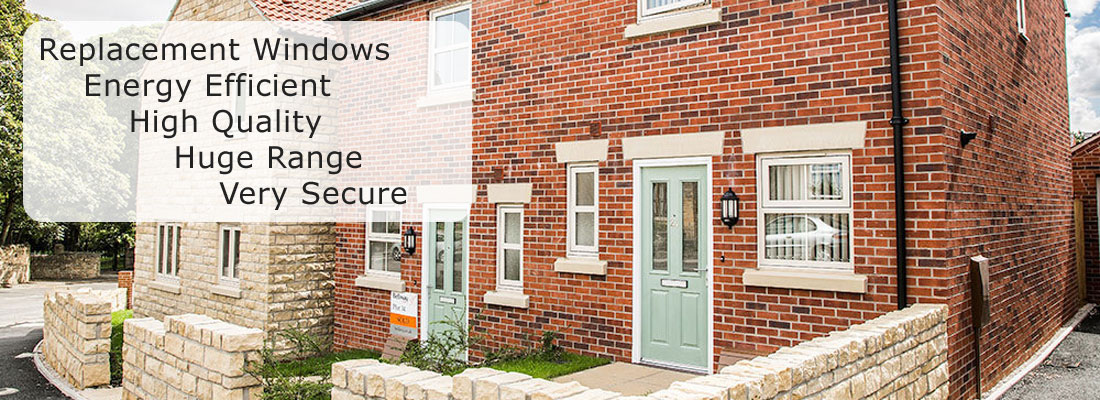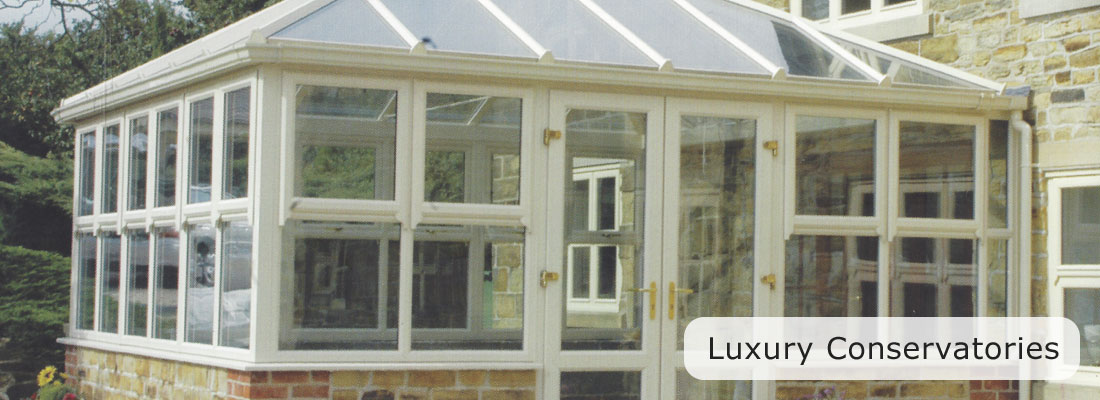Beds: 01462 290 188




Double Glazing and the Environment
A few years ago, we started to see and hear reports about adverse effects on the environment owing to our overuse of certain fuels and CFC propellants in aerosols. Many either took little or no notice of the reports or put them down to scaremongering, whereas others would simply mock those who predicted any unprecedented climate changes. Fortunately, today we are more receptive to the changes as we are witnessing them happening for ourselves.
We see the impact through more flooding, more powerful storms, hotter summers and warmer, often drier winters.
We have started to take steps to combat the damage being done to the planet, for example by recycling more, wasting less and using less energy. Every action we take, no matter how small, still plays a positive part towards helping our environment. However, there are still many things we could be doing that we may not even be aware of.
Often these steps can begin in our homes! We can make them more eco-friendly and efficient and there may even be government grants or other incentives for making the necessary changes to our properties.
For many, particularly at the moment, with the astronomical rise in energy prices, keeping the cold out and the heat in has become even more of an important issue.
It is easy to see how turning off a light, or keeping a window closed can save some energy, but it can become really confusing when the subjects of ozone layers, what is or is not environmentally friendly and carbon footprints are mentioned. Actually, one of the easiest and most beneficial ways to make your home more environmentally friendly and reduce your carbon footprint is by installing double glazing.
So what is a Carbon Footprint?
We need to use energy in our daily lives, so first we must create that energy, and a major source of this energy comes from burning fossil fuels. Fossil fuels are fuels that have been formed by the natural decomposition and fossilisation of plants and animals, over the course of many millions of years. Gradually buried underground and subjected to pressure from rocks and dirt, as well as heat from the earth's core, they are converted into fuels such as gas, oil and coal. We mine these fossil fuels to power our homes, industries and cars. Even electricity generated by many of our electrical power stations comes from the burning of fossil fuels.
Fortunately there are alternative types of energy, which are starting to be used more and more frequently thanks to past and ongoing research by those who recognised the possibility of us reaching a tipping point with regard to energy consumption. They have developed better ways to harness the power of the sun, the wind and the waves, in short, renewable sources. On the down side, fossil fuels accounted for 76.5% percent of the energy we use in the United Kingdom in 2020.
When we burn these fossil fuels, carbon dioxide is released into the atmosphere. Plants and trees convert carbon dioxide back into oxygen. However, the rate at which we are burning fossil fuels means that our plants and trees cannot meet the demand we are creating, meaning carbon dioxide remains in the atmosphere, causing the global temperature to rise. Deforestation compounds this problem, which is why tree planting projects are so important. Our carbon footprint is the impact of all our activities that produce carbon, this includes in our homes, transport use and even our shopping habits. By making our homes more energy efficient, we can reduce our carbon footprint.
The UK average carbon footprint is about 10 tonnes CO2 per person per year. This is about double the world average. Although we are continuing to decrease our countries carbon emissions with various environmental initiatives, this figure is still high.
The United Kingdom has signed up to the Paris Agreement, alongside 176 other parties, committing to significantly reduce carbon emissions by the year 2050. The United States recently pulled out of this agreement, to widespread anger and criticism from other countries.
Double glazing to help combat environmental damage
As already discussed, we all need to do more to save energy for the sake of the environment, but most people are likely to agree that keeping their hard earned cash in their pockets, rather than the pockets of the energy firms is more important to them in the short term. Having double glazing installed is a fantastic step in the right direction. Not only will you be playing a small part in protecting the environment, but will also be saving a good sum of money every year on your heating bills.
How does double glazing help save the environment and money?
Because double glazing has two panes of glass that are used to trap air between them, using a small gap, the air acts as another layer or barrier and provides additional insulation to the home as well as reducing noise coming in from outside and preventing condensation from forming. The effectiveness can be seen if one pane is cracked, allowing condensation to accumulate inside the double skin.
When you consider that around half of the heat in your home is lost through the windows, walls or attic, it's easy to see why having the windows double glazed is a sound idea. The more heat that is lost, the more energy you will have to use to heat your home, particularly during the colder winter months, which will drive up your energy bills. And the more energy you use, the more fossil fuels will have to be burned to supply that energy, adding to the overall global carbon emissions.
It has been estimated that having double glazing installed in your home can reduce carbon emissions by up to 680 kilograms per year, now that's a fair amount by any standard.
Owing to the insulating barrier incorporated into double glazing, you will be significantly reducing the percentage of heat that is lost through the glass. In single glazed windows, the heat loss is recorded to be at least twenty percent.
Air or special gases can be trapped between the two panes to create an additional barrier for heat and noise. Gases commonly used include argon, xenon and krypton, as these are known for their insulating properties. Generally speaking, double glazed units that use air in the gap instead of gas tend to be somewhat cheaper, just less effective overall.
High quality double glazing will use special energy efficient glass. The most energy efficient glass is low emissivity glass. Low emissivity glass has an invisible metal oxide coating on one side of the pane, allowing light to pass through freely, but preventing more heat from escaping. The panes are separated using pane spacers. The most efficient type of pane spacer is one that contains little or no metal, as metal does conduct heat.
There are a few different materials that are used in the manufacture of double glazed window frames. These include wood, uPVC, composite materials, aluminium and steel. Each material has different environmental benefits and this should be borne on mind when purchasing double glazing. uPVC, aluminium and steel frames are very long lasting and are widely recycled, making them a great choice, while wooden frames have a lower environmental impact overall, they do require more maintenance, such as periodic painting and they can rot eventually. If you are choosing a window frame, make sure to check the energy ratings.
The Energy Saving Trust Recommended logo was a UK-based labelling and certification scheme for energy efficient products such as double glazing. A product displaying the logo showed that it met strict criteria on energy saving. The scheme was run by the Energy Saving Trust and was launched in 2000. The logo is registered with the UK Patent Office and could be used by manufacturers, retailers and suppliers to signpost consumers to best-in-class energy efficient products.
The Energy saving trust no longer awards a "Recommended" certification. Its product certifications now include "Energy Saving Trust Endorsed", "Energy Saving Trust Listed", and "Verified by Energy Saving Trust", so keep an eye out for these.
Double glazing to improve ventilation in your home and office
With the Covid-19 situation, the advice is to increase the ventilation around us, and double glazing makes this even easier. Double glazed windows with tilt and turn opening mechanisms or trickle vents help to increase the ventilation in buildings, enhancing the flow of air so that you don't need to use fans or air conditioning systems which uses more of the very energy that is contributing to your carbon footprint.
Over twenty five percent of carbon emissions in the United Kingdom come from the energy we use in our homes. The more people who make the change to double glazing, the more positive the impact will be on the environment.
Glazing when double glazing is not an option
Some people cannot have double glazing installed because they live in a listed or heritage property, but they still want to make their home more energy efficient, while reducing their carbon footprint. Many in this position choose to install secondary glazing. Secondary glazing consists of simply adding a thin window pane next to the existing window. The secondary glazing is very lightweight and although not as effective as proper double glazing, it is the perfect solution when you can't have the genuine article.
What else can be done to save money and the environment?
Double glazing is a great way to reduce expenditure on heating and help the environment at the same time, but other simple things can also be adopted to give our environment a helping hand.
Things like insulating your loft space, draught proofing doors and having cavity wall insulation fitted can make a massive difference to heat loss in your home. Coupled with good quality double glazing, a sizeable chunk of cash can be saved every year, not to mention the amount of energy you will be saving.
Energy saving light bulbs are also a great call, as well as checking the energy ratings on all new appliances before you buy them.
Recent research suggests that by installing double glazing in your home you could save an average of £80 to £100 per year on your energy bills as a result, now that's not to be sniffed at! So not only do double glazed windows look great, save you money, reduce heat loss, draughts and stop your wallet from haemorrhaging money, they help the environment too by reducing our carbon footprint.
Other Articles on UPVC windows and doors
Quality Double Glazing to Beat the Energy Price Rise
Good quality double glazing can not only save you money on your energy bills, but it could literally save you from freezing in your own home. Although we tend to concentrate on cold weather badly affecting the elderly, it would be prudent to look at things from the other end of the heat spectrum too and how good double-glazing units can help in both instances
Read more about - Quality Double Glazing to Beat the Energy Price Rise...
The Joys of Owning a Conservatory
A conservatory, along with quality double glazing, is the one thing that you can add to your home to improve your living experience and living space more than any other home improvement. A conservatory remains at the pinnacle of home improvement projects, because it not only creates more space, it creates a bright, light and airy space where you can enjoy the great outdoors, from inside your own home.
Read more about - The Joys of Owning a Conservatory...
Smart Windows Save Energy and Money
Smart windows, or smart glass is glass where the light transmission properties can be altered when voltage, heat or light is applied. The application of one of these factors can change the glass from a transparent to a translucent state, and back again when required. It may sometimes be referred to as switchable glass or windows.
Read more about - Smart Windows Save Energy and Money...
Flush Casement Windows in Conservation Areas
Replacing windows in a conservation area could land you in trouble with the authorities, particularly if you change the overall look of the building. Windows are more than a means of looking out at the scenery and keeping the rain and wind out in these areas. The window is one of the defining features of a building and one of the main visual characteristics of it.
Read more about - Flush Casement Windows in Conservation Areas...
Aspect Windows through the Pandemic
Many of our potential customers have aked us whether or not the lockdown will affect window installations. Well, it's good news! Should you have home improvements booked, we can still work in your home. Window installers along with other trades can continue to work inside their customers homes during the new lockdown period, however, COVID-secure guidelines must be adhered to at all times.
Read more about - Aspect Windows through the Pandemic...
Further Information
If you would like to know more or are interested in a quote we would be happy to help. Phone us on 01438 311 412, email us at enquiries@aspectwindowsanddoors.co.uk or fill in our enquiry form and we will be in touch as soon as possible.
ASPECT Windows and Doors
Herts: 01438 311 412 | Beds: 01462 290 188 | Mob: 07757 789 004 | Email us
Business & Technology Centre, Stevenage, Hertfordshire SG1 2DX
ASPECT Windows and Doors
t. 01438 311 412
ASPECT Windows and Doors is a trading name of Window Care Herts Ltd
Company No. 07340625 | VAT No. 102 8284 39 | Fensa Reg. No. 23874

